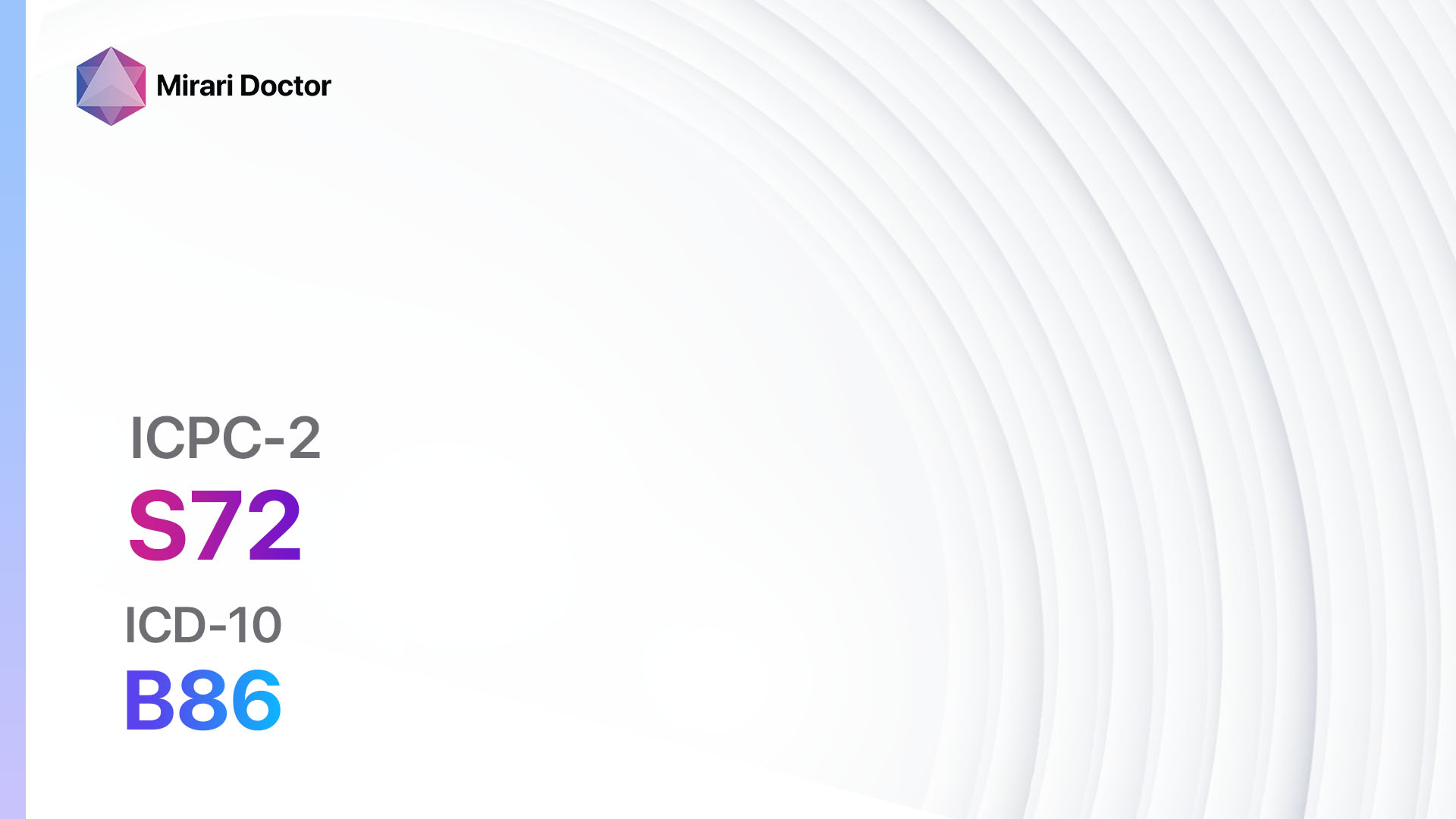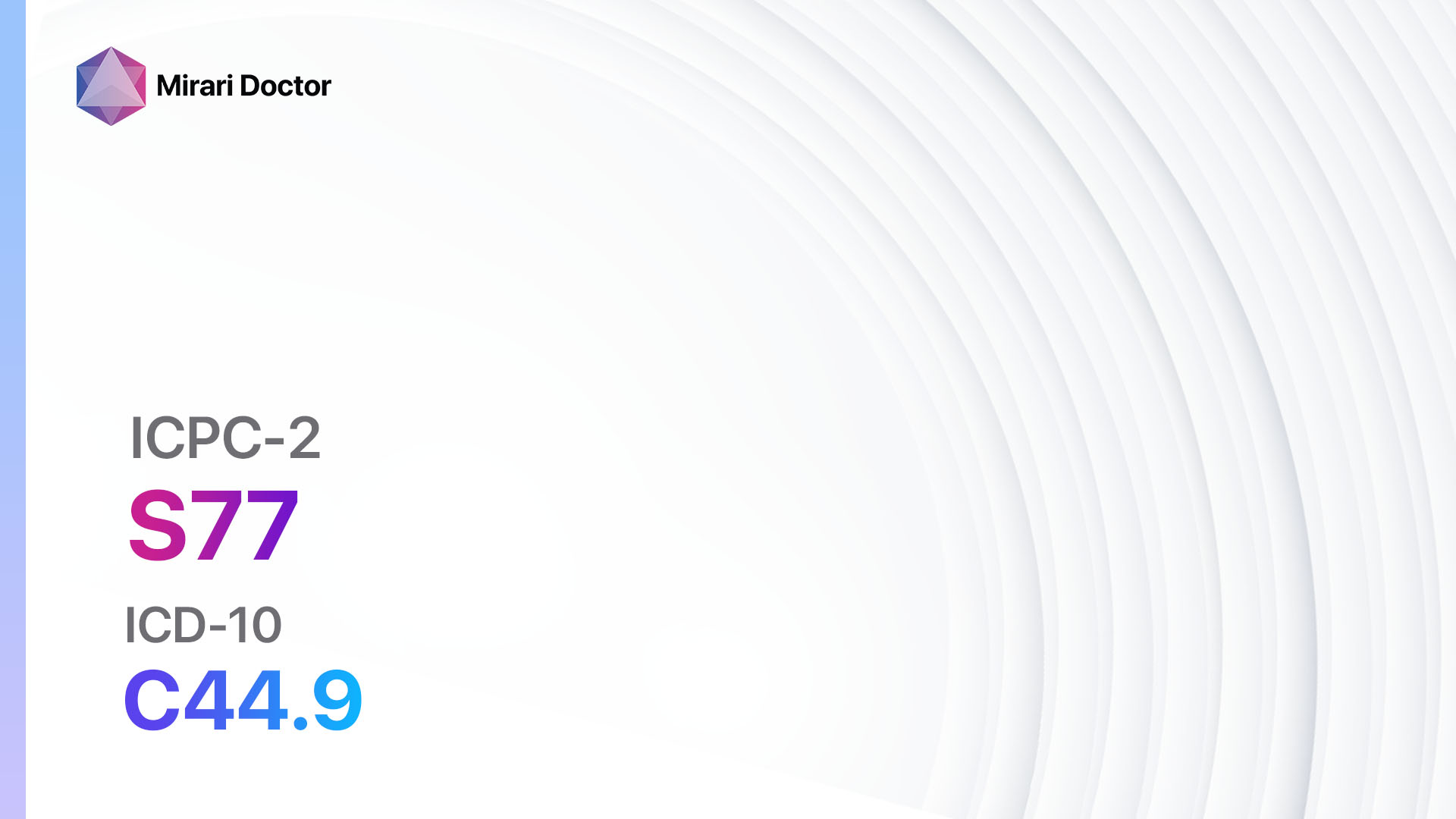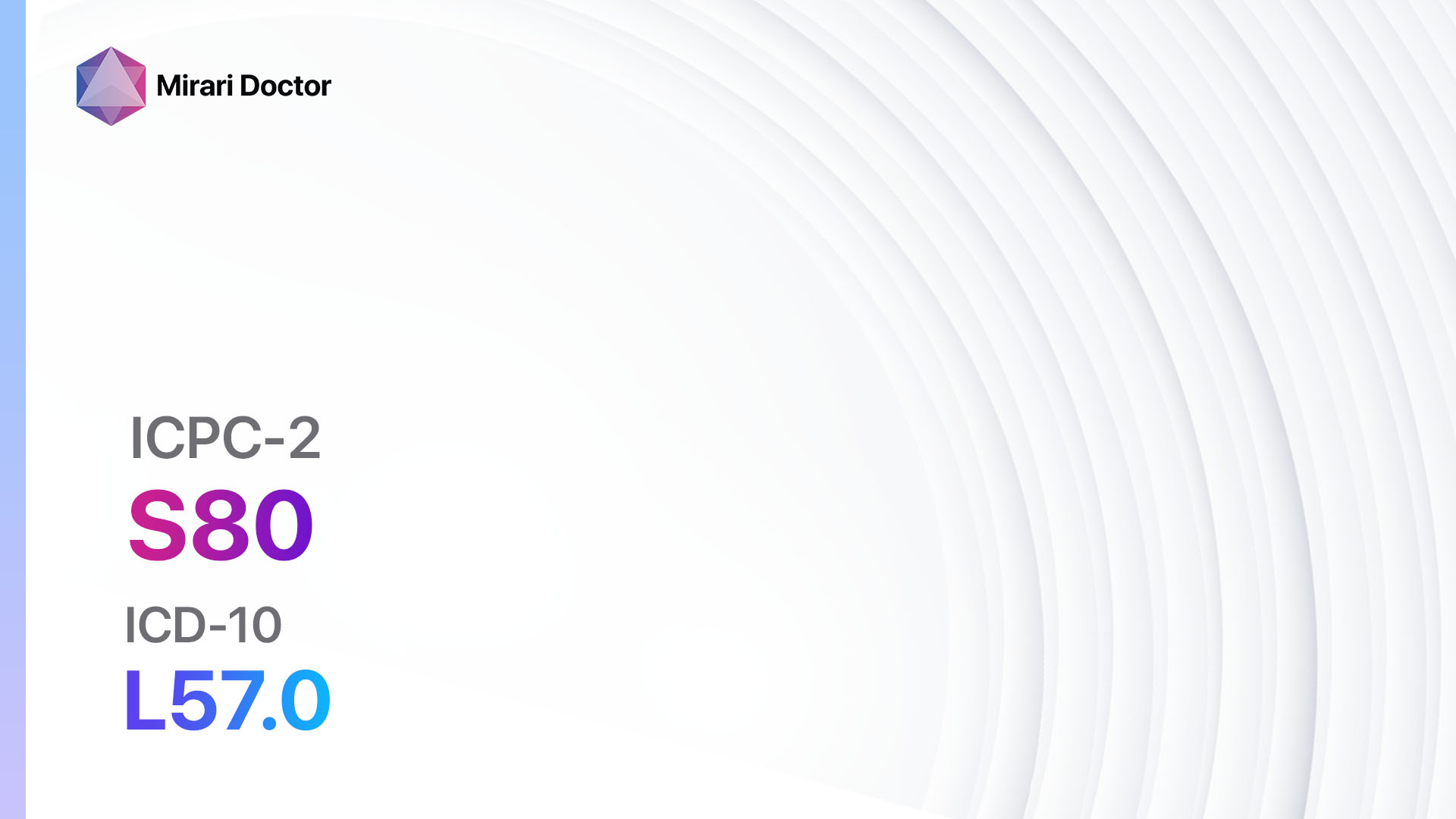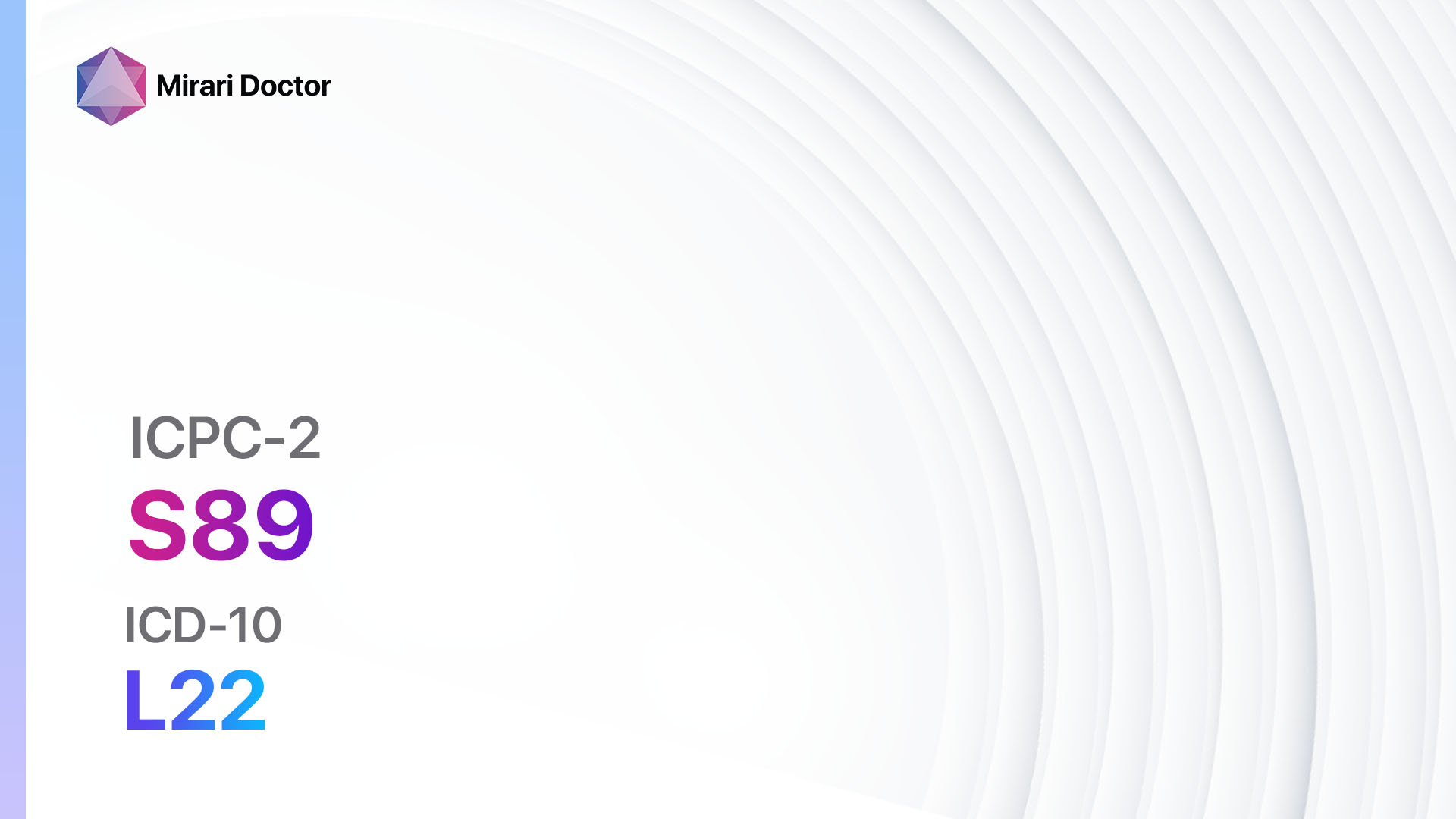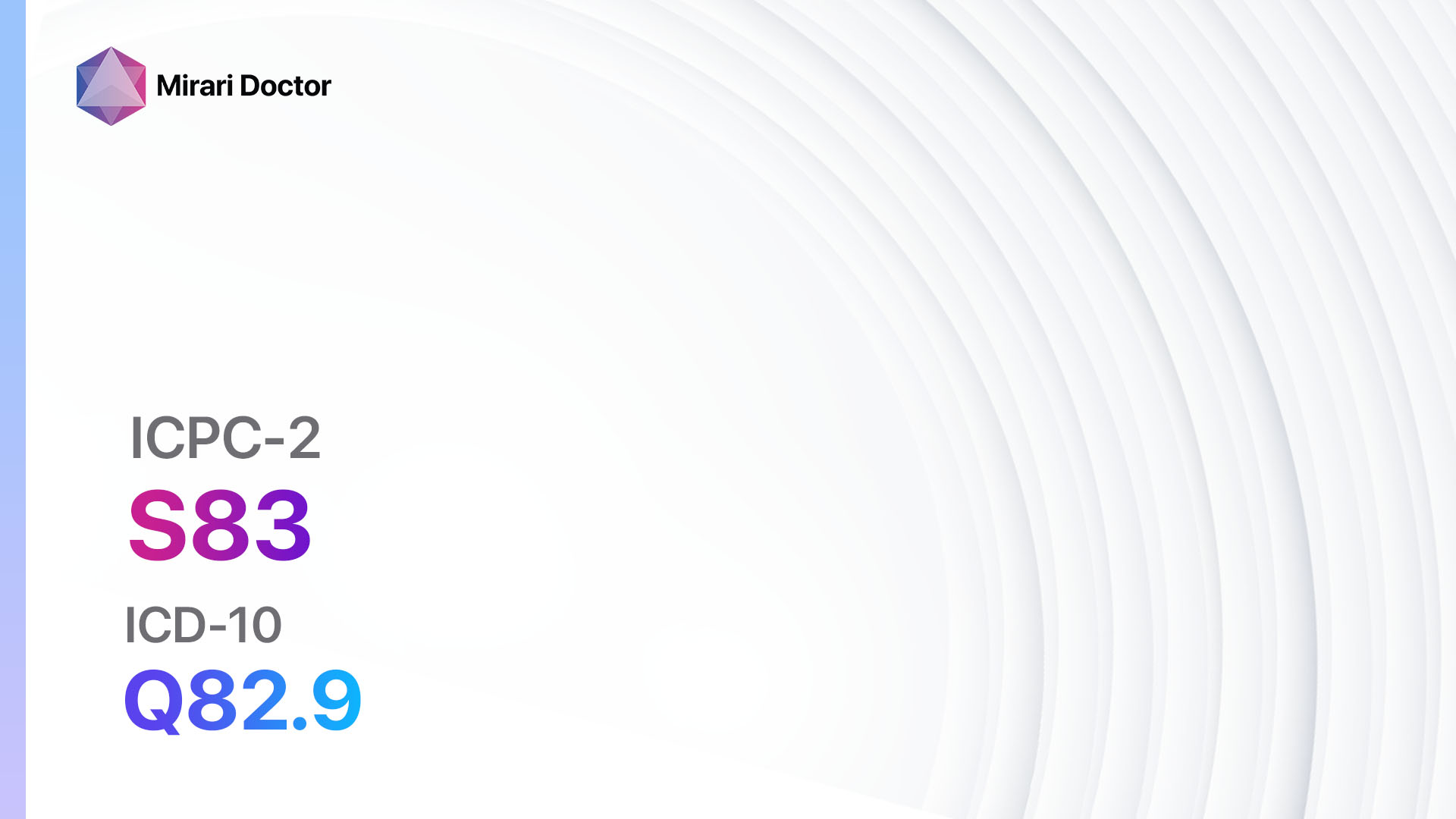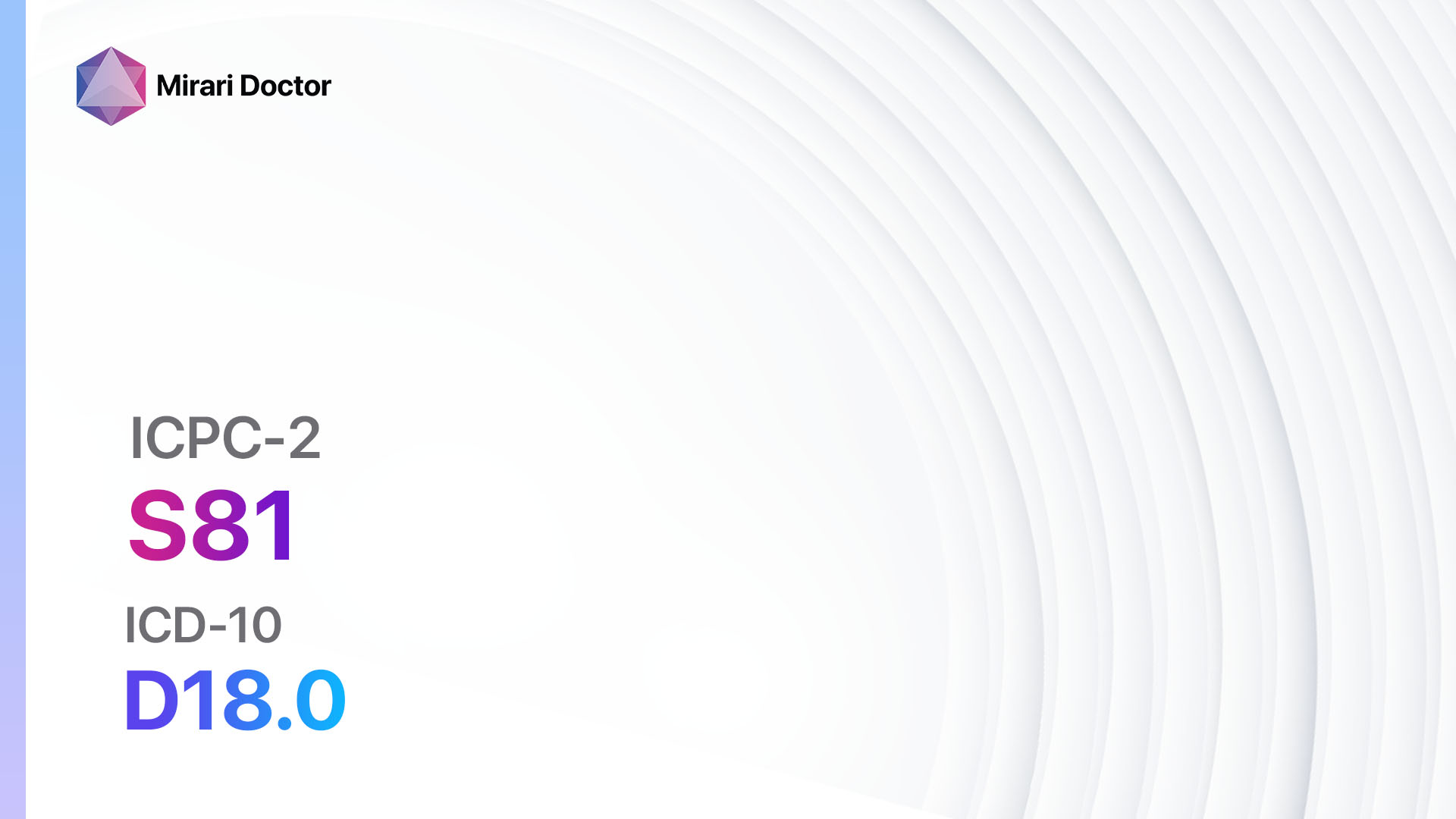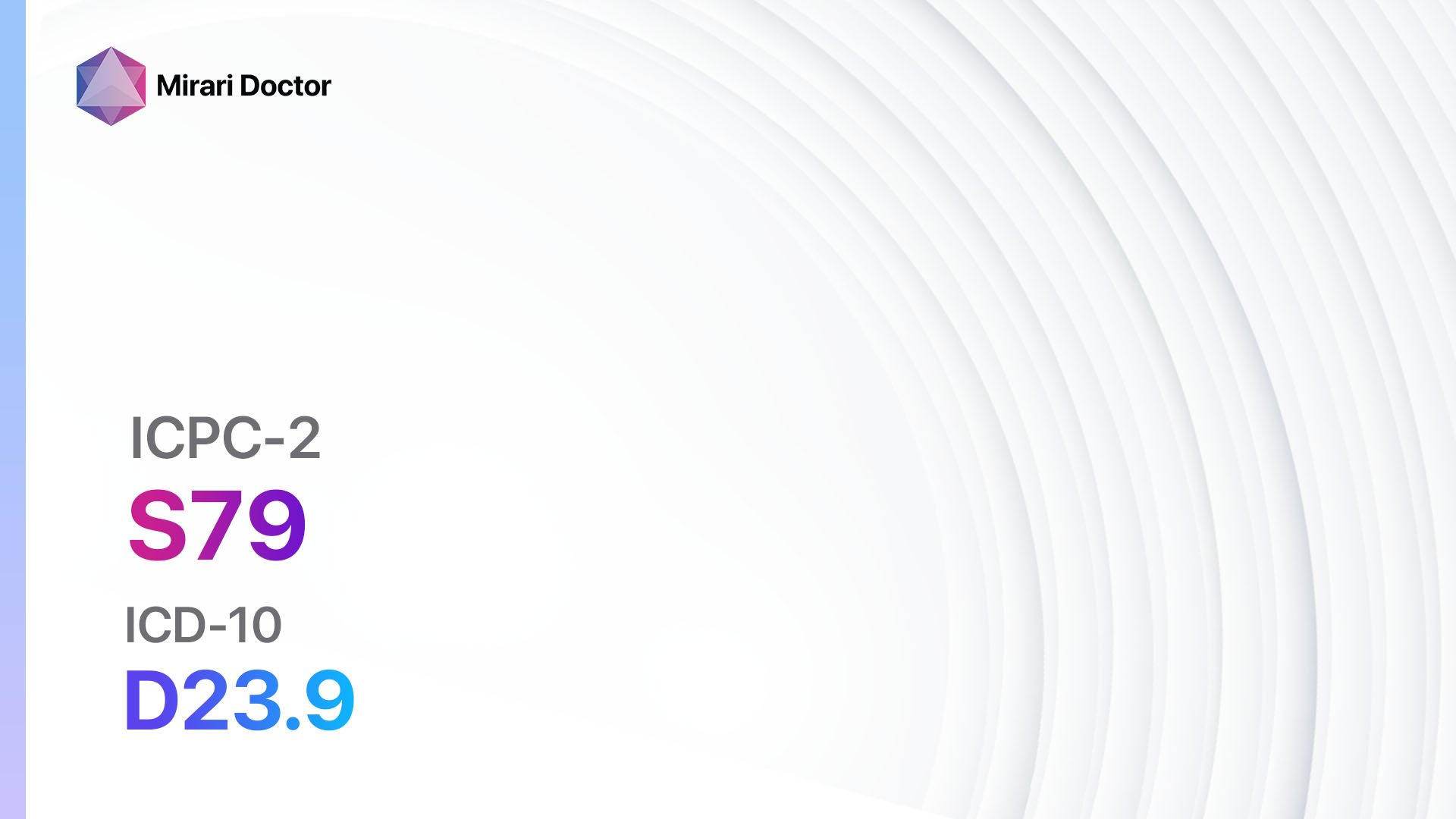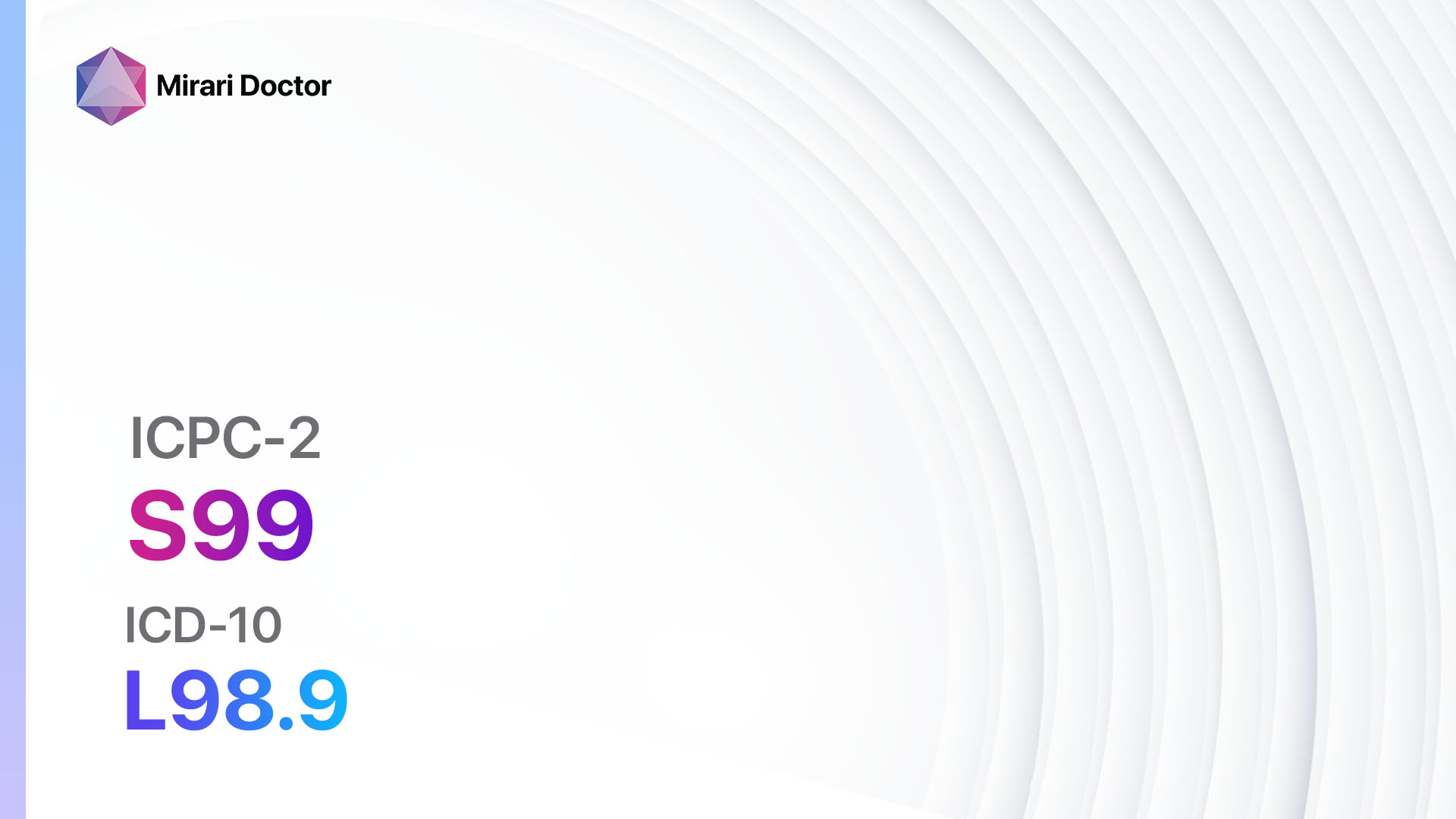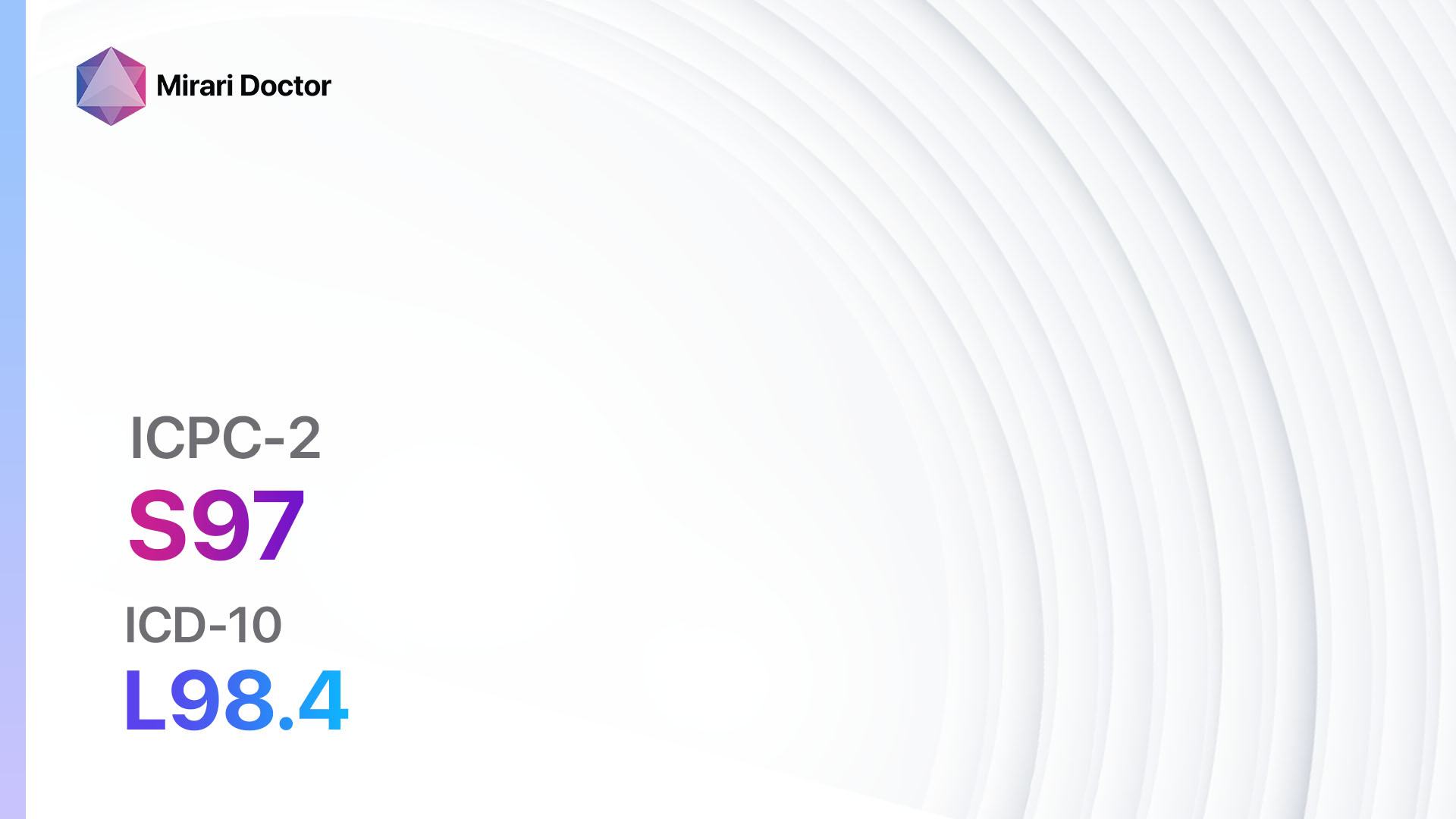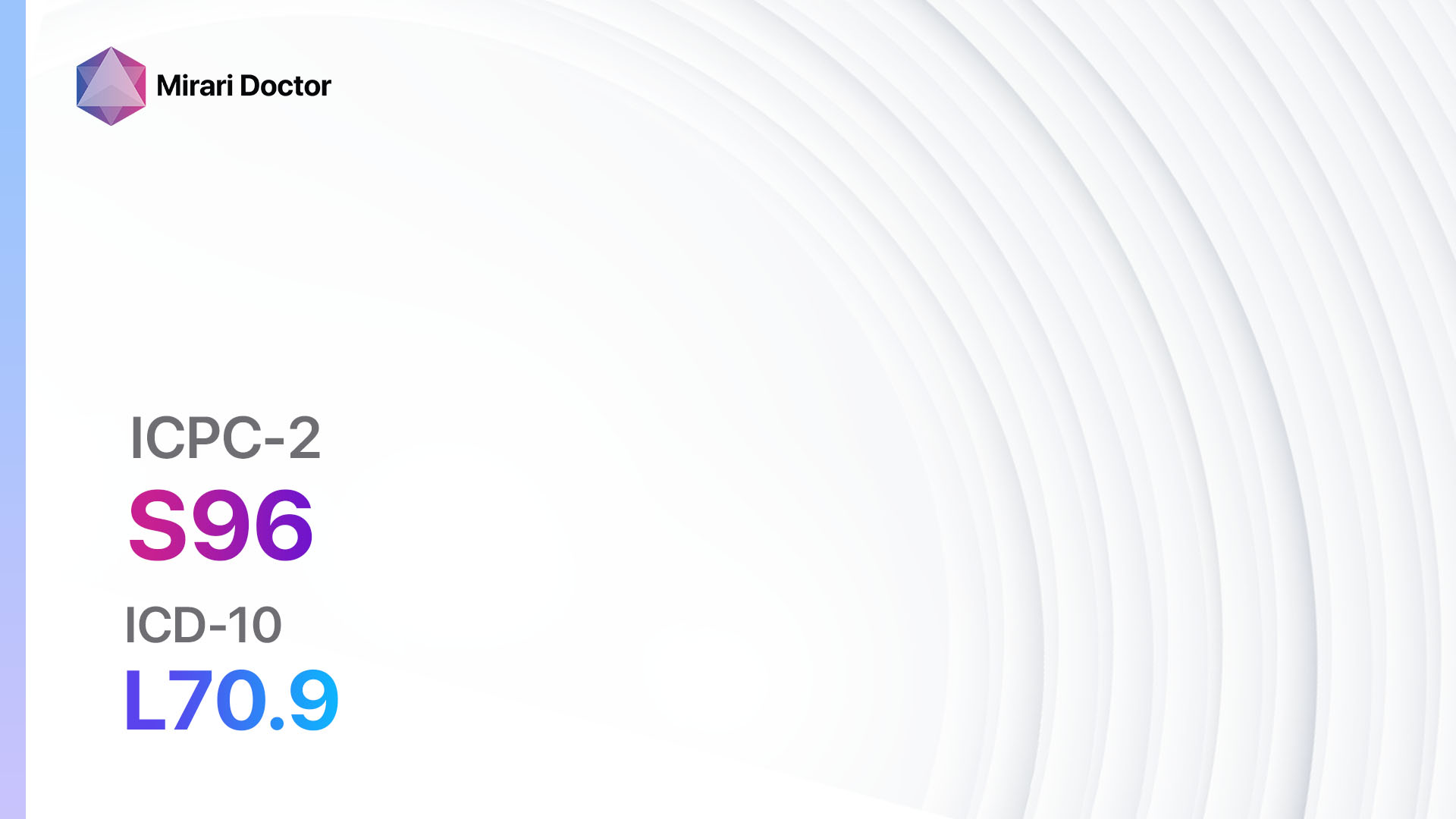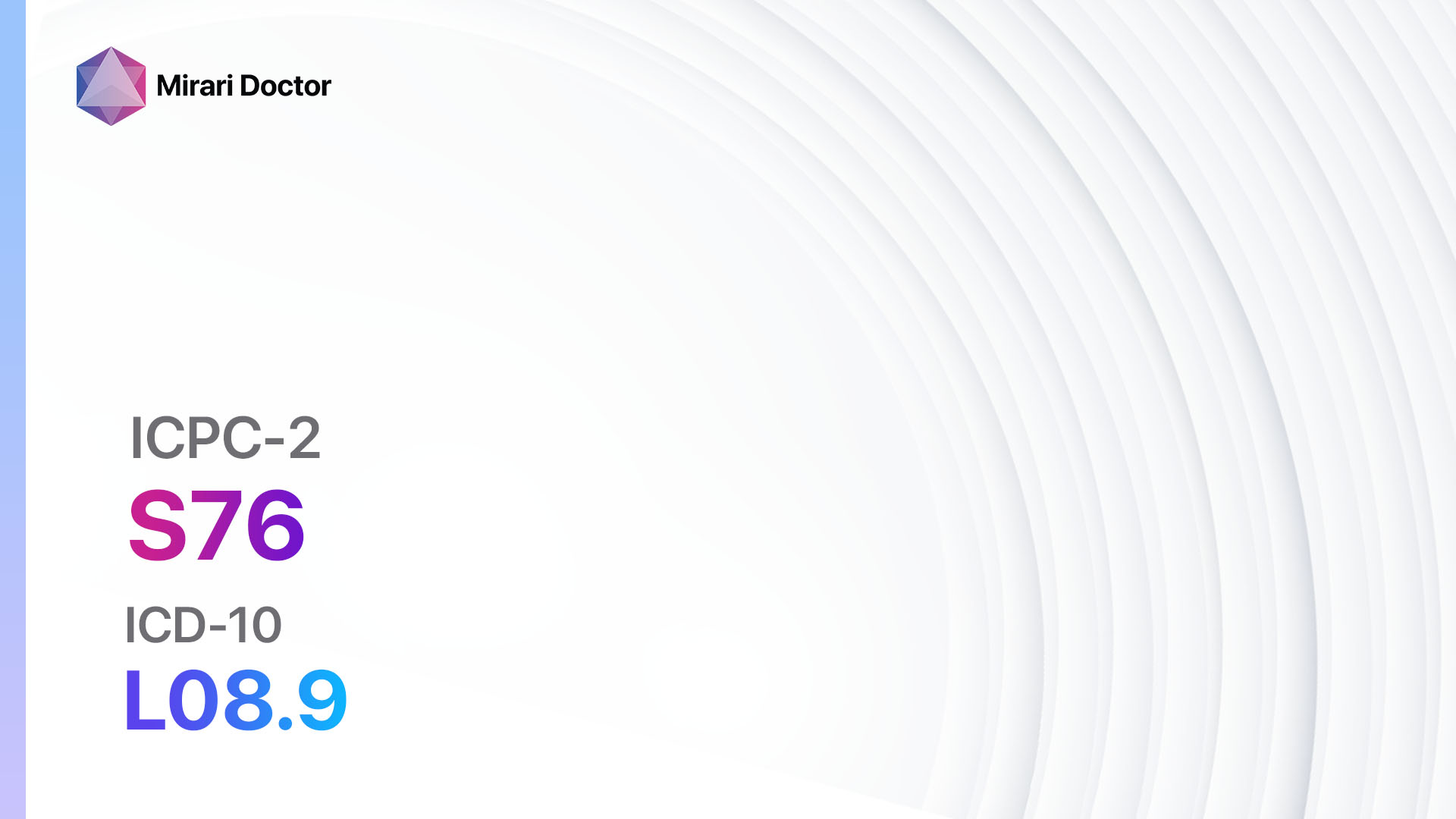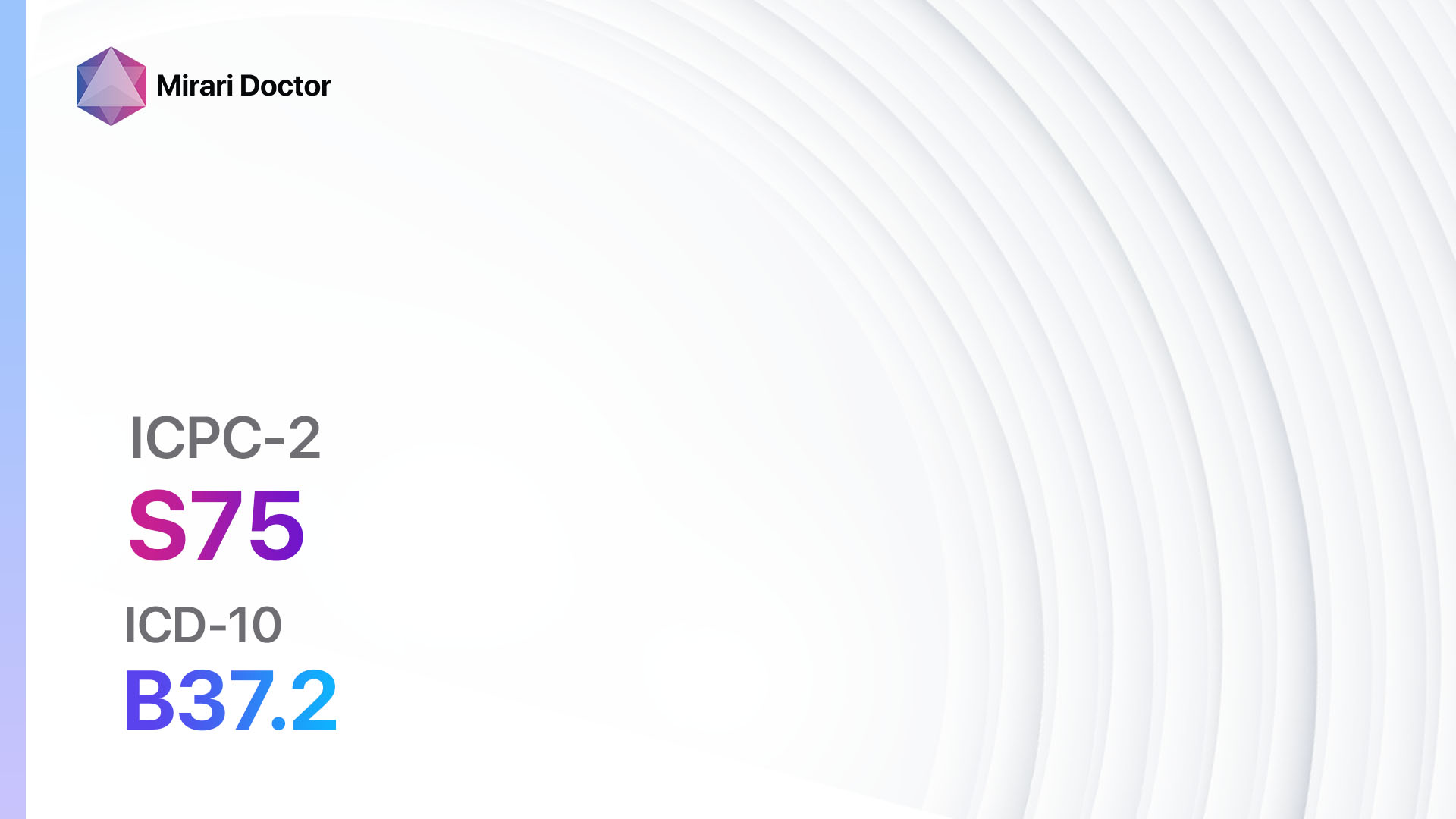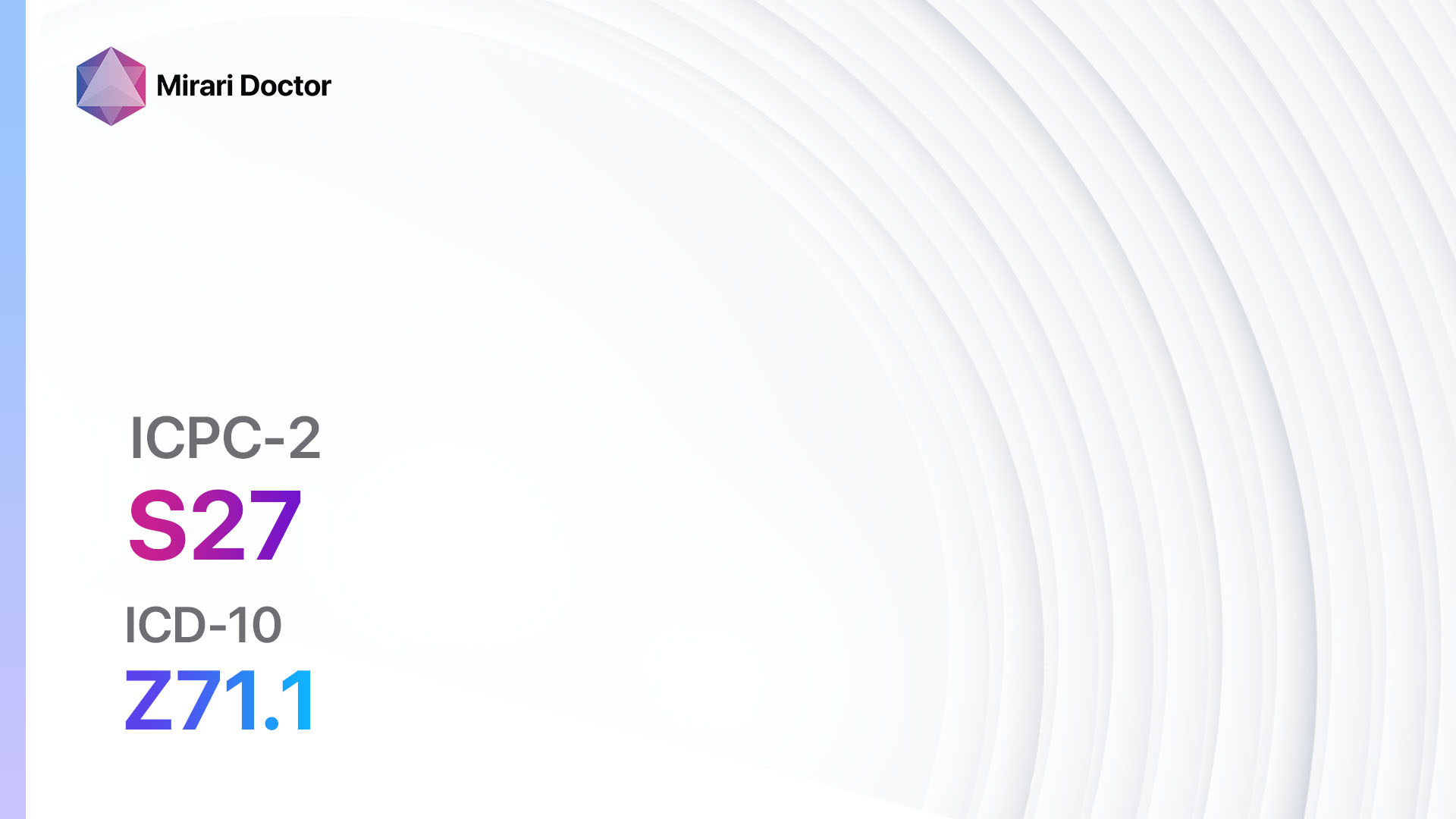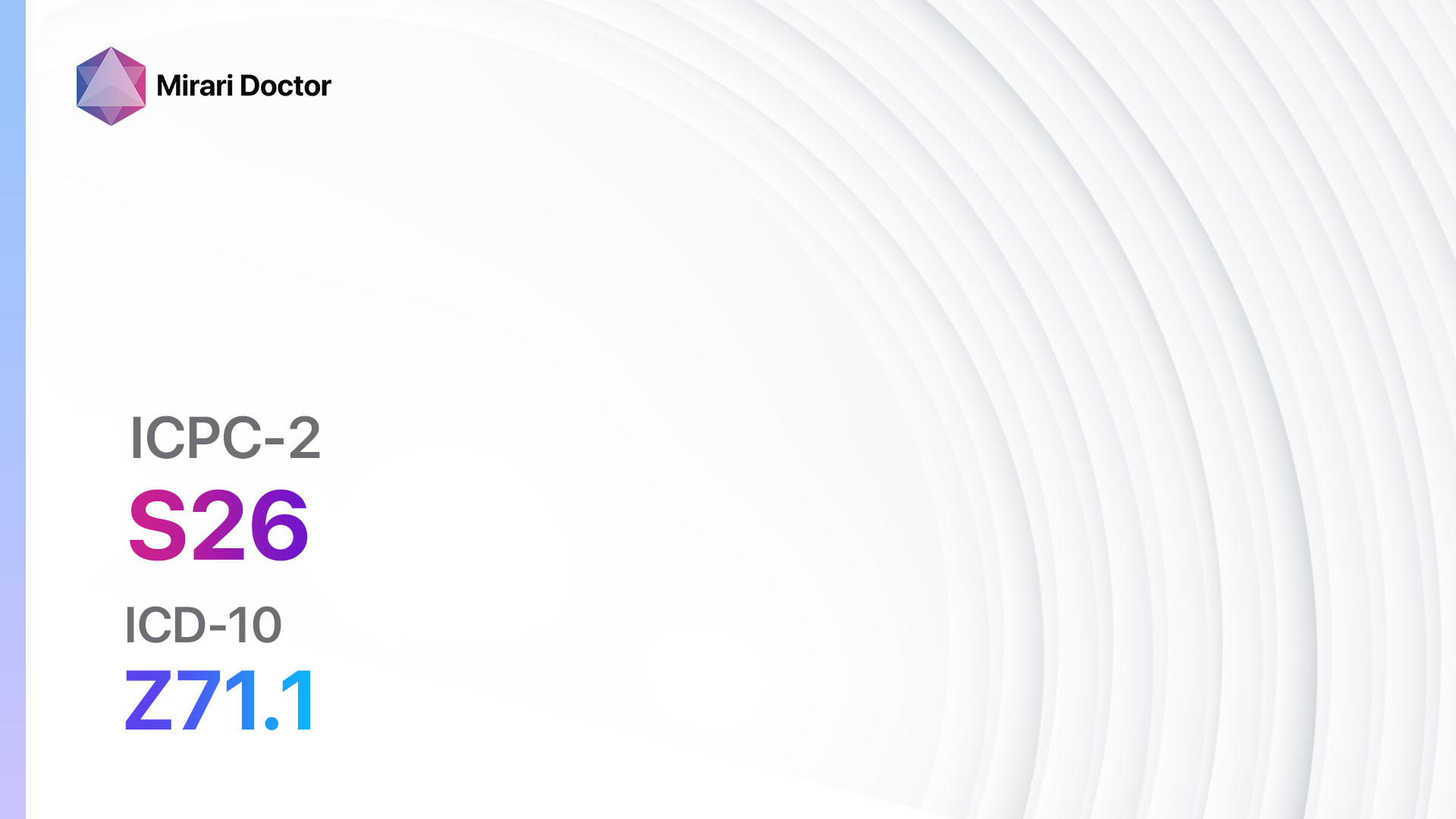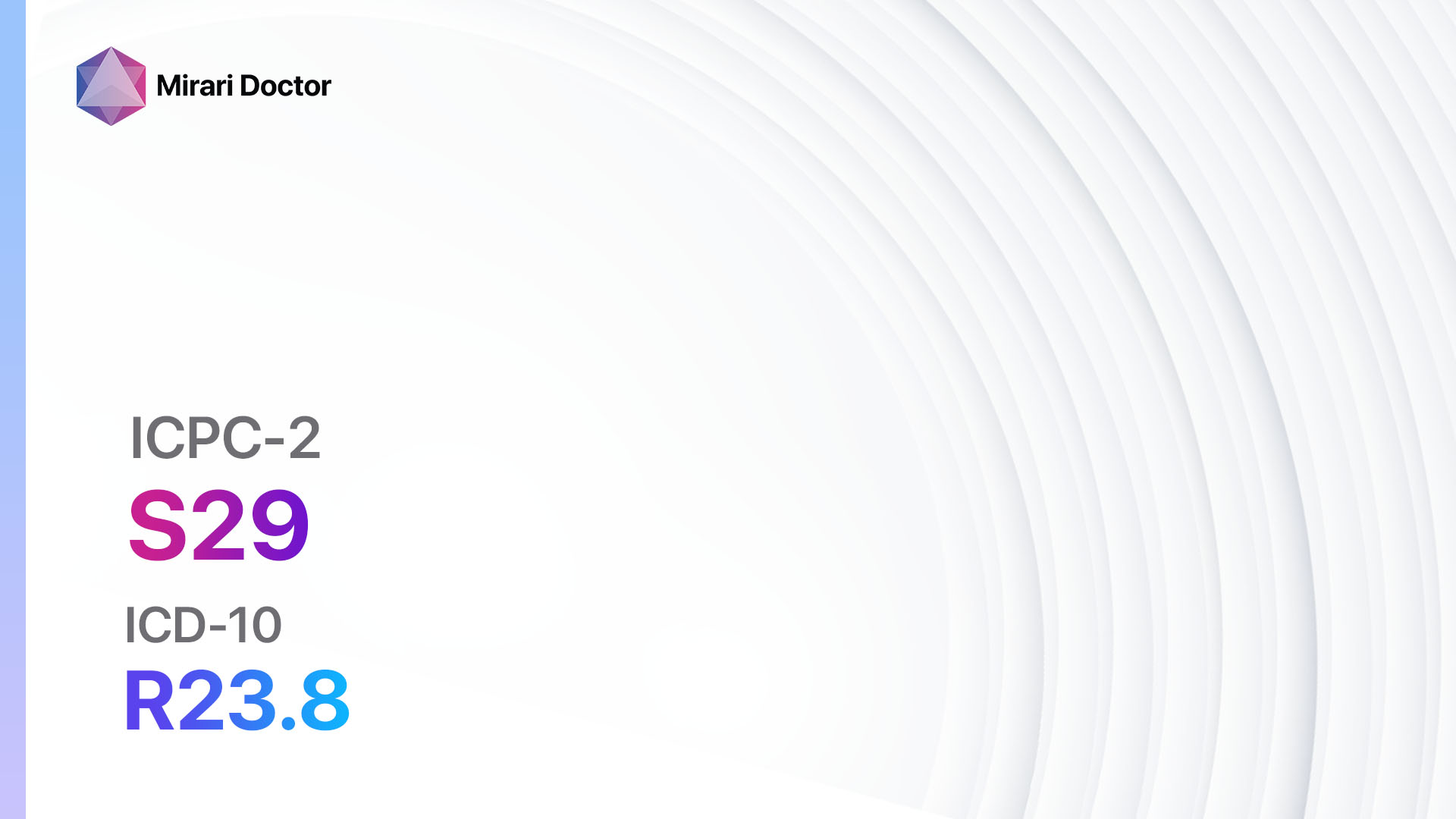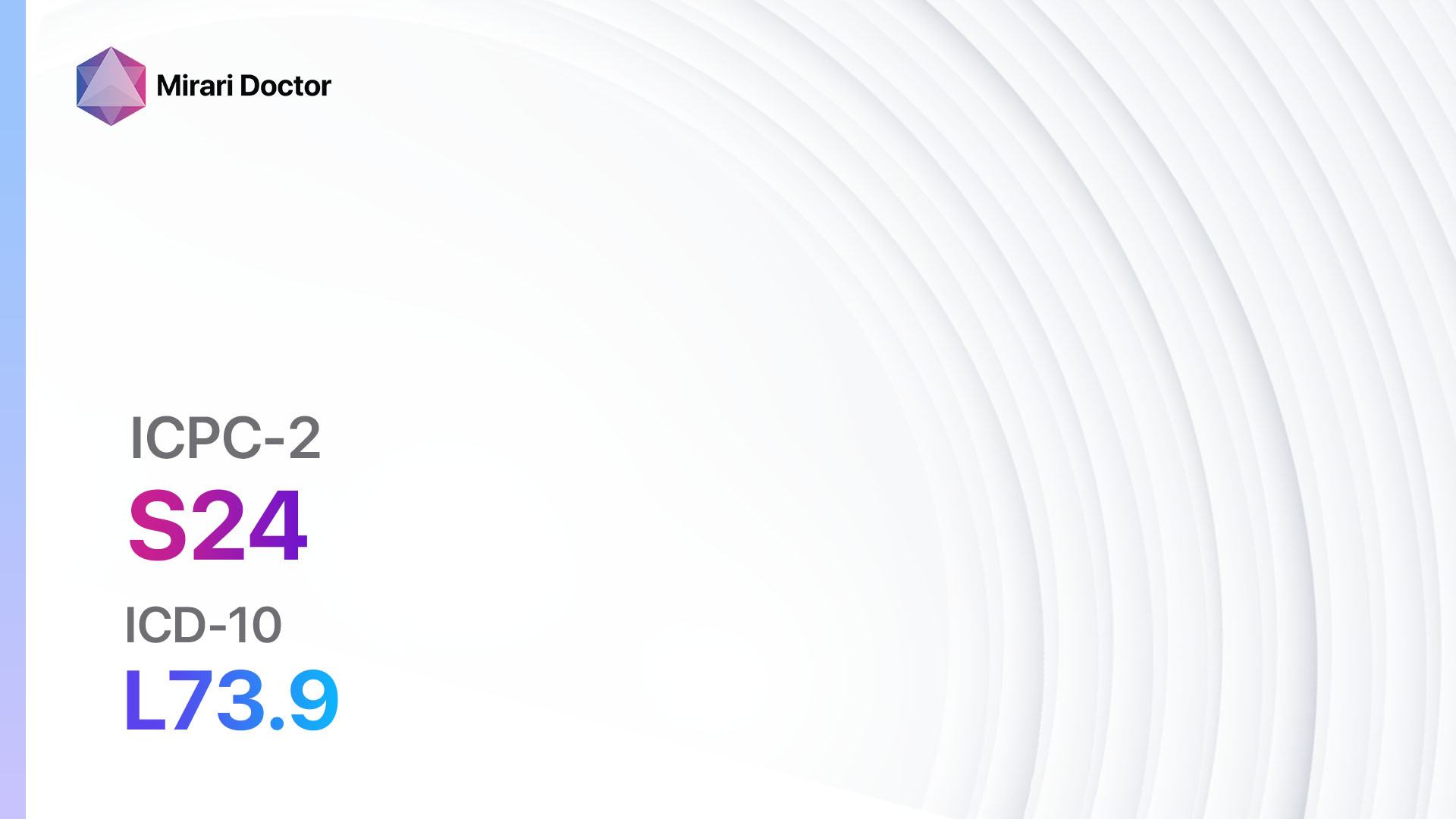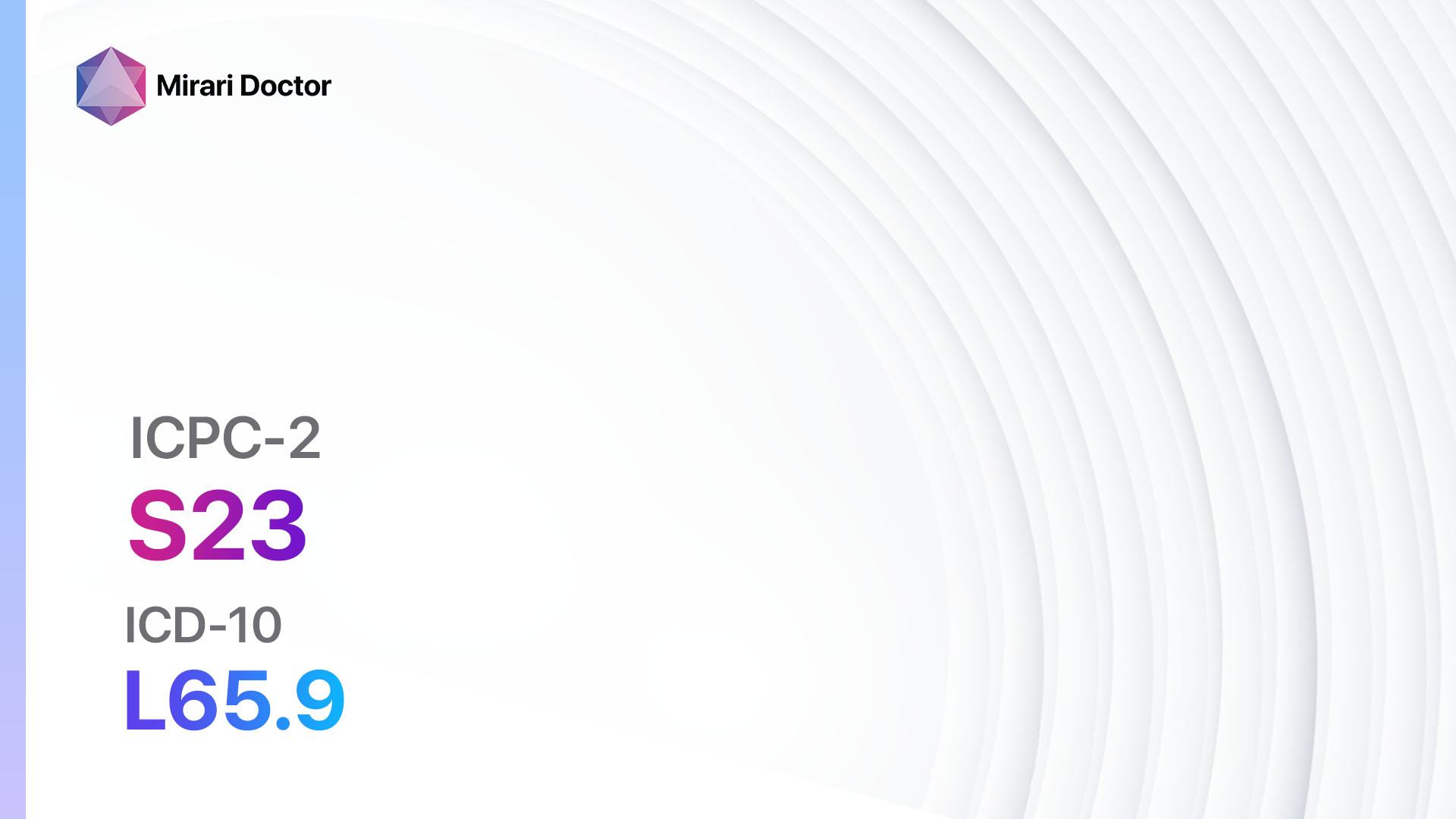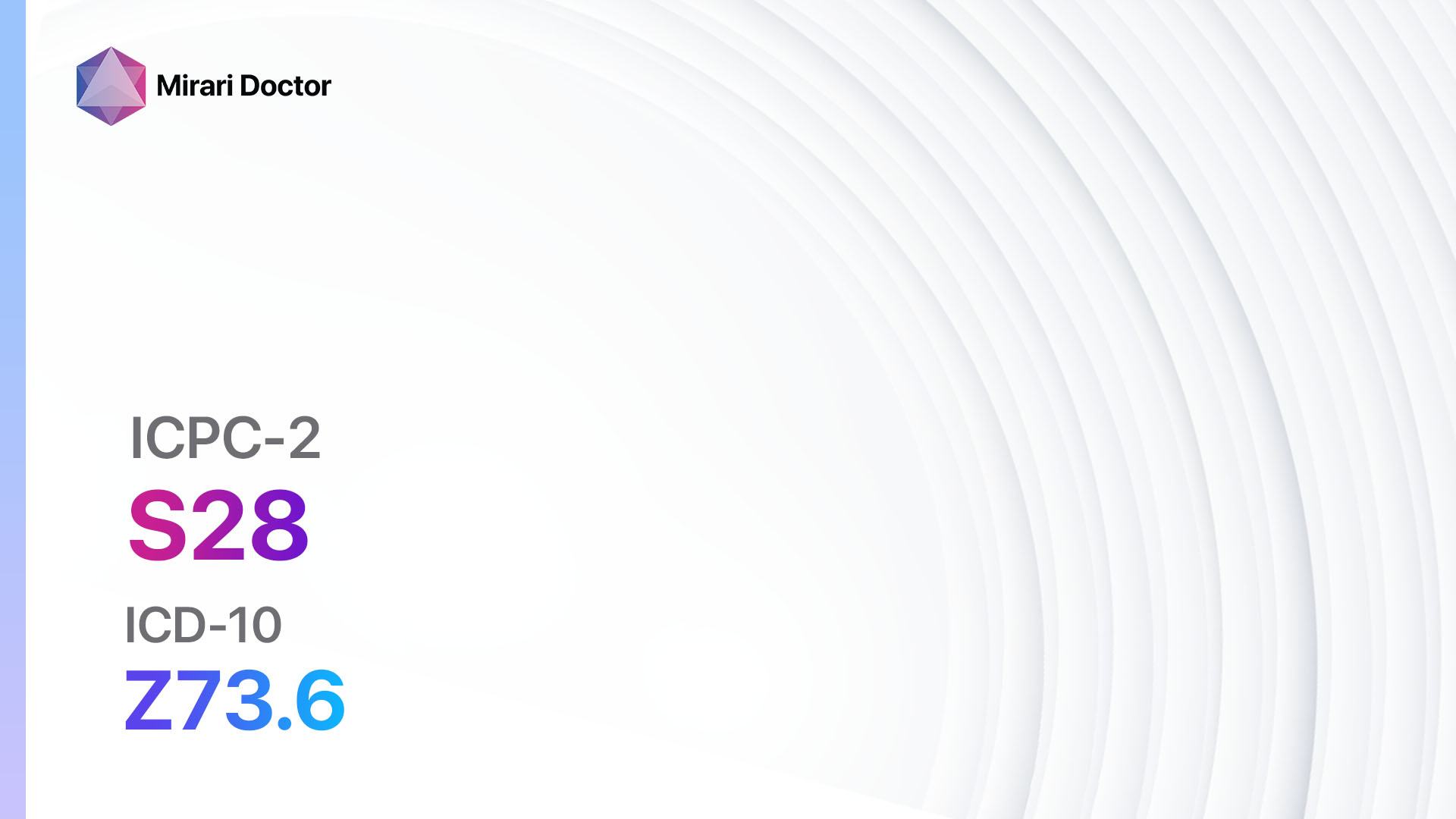
Introduction
Corn/callosity is a common condition characterized by the thickening and hardening of the skin in response to repeated friction or pressure.[1] It typically occurs on the feet, especially on the toes or soles.[2] Corns and calluses can cause discomfort and pain, and if left untreated, they can lead to complications such as infections.[3] The aim of this guide is to provide a comprehensive overview of the diagnosis and management of corns and calluses.
Codes
Symptoms
- Thickened, hardened skin[6]
- Rough, raised bumps[6]
- Pain or tenderness[6]
- Discoloration of the skin[7]
- Flaky or dry skin[7]
Causes
- Ill-fitting shoes[8]
- High heels or tight shoes[8]
- Foot deformities[8]
- Abnormal gait or walking pattern[8]
- Excessive pressure or friction on the feet[8]
Diagnostic Steps
Medical History
- Gather information about the patient’s symptoms, including the duration and severity of corns or calluses.[9]
- Ask about the patient’s footwear habits, including the type of shoes worn and any recent changes.[9]
- Inquire about any underlying medical conditions or foot deformities that may contribute to the development of corns or calluses.[9]
Physical Examination
- Inspect the affected area for the presence of corns or calluses.[10]
- Palpate the skin to assess for tenderness or pain.[10]
- Evaluate the patient’s gait and foot structure to identify any contributing factors.[10]
Determine Severity
- Classify the corns or calluses based on severity and depth:
- Grade 1: Mild thickening of the skin without pain or tenderness.
- Grade 2: Moderate thickening of the skin with mild pain or tenderness.
- Grade 3: Severe thickening of the skin with significant pain or tenderness.
Laboratory Tests
- No specific laboratory tests are required for the diagnosis of corns or calluses.
Diagnostic Imaging
- No diagnostic imaging is necessary for the diagnosis of corns or calluses.
Other Tests
- No other diagnostic tests are necessary for the diagnosis of corns or calluses.
Follow-up and Patient Education
- Schedule a follow-up appointment to monitor the progress of treatment and address any concerns.
- Educate the patient about proper foot care, including the importance of wearing well-fitting shoes and using protective padding or inserts.
- Provide instructions on self-care measures, such as regular exfoliation and moisturization of the feet.
Possible Interventions
Traditional Interventions
Medications:
Top 5 drugs for Corn/callosity:
- Salicylic acid:
- Cost: Over-the-counter products range from $5-$15.
- Contraindications: Allergy to salicylates, diabetes, poor circulation.
- Side effects: Skin irritation, redness, burning.
- Severe side effects: Severe skin irritation, allergic reactions.
- Drug interactions: None reported.
- Warning: Avoid use on open wounds or infected areas.
- Urea cream:
- Cost: Over-the-counter products range from $10-$20.
- Contraindications: Allergy to urea, diabetes, poor circulation.
- Side effects: Skin irritation, redness, itching.
- Severe side effects: Severe skin irritation, allergic reactions.
- Drug interactions: None reported.
- Warning: Avoid use on open wounds or infected areas.
- Salicylic acid and lactic acid combination:
- Cost: Over-the-counter products range from $10-$20.
- Contraindications: Allergy to salicylates or lactic acid, diabetes, poor circulation.
- Side effects: Skin irritation, redness, burning.
- Severe side effects: Severe skin irritation, allergic reactions.
- Drug interactions: None reported.
- Warning: Avoid use on open wounds or infected areas.
- Corticosteroid cream:
- Cost: Prescription products range from $20-$50.
- Contraindications: Allergy to corticosteroids, diabetes, poor circulation.
- Side effects: Thinning of the skin, skin discoloration, increased risk of infection.
- Severe side effects: Adrenal suppression, allergic reactions.
- Drug interactions: None reported.
- Warning: Use with caution and under medical supervision.
- Antibiotic ointment:
- Cost: Over-the-counter products range from $5-$15.
- Contraindications: Allergy to antibiotics, open wounds, infected areas.
- Side effects: Skin irritation, redness, itching.
- Severe side effects: Severe skin irritation, allergic reactions.
- Drug interactions: None reported.
- Warning: Use only on clean, intact skin.
Alternative Drugs:
- Tea tree oil: Natural oil with antimicrobial properties. Cost: $10-$20.
- Vitamin E oil: Promotes skin healing and moisturization. Cost: $5-$15.
- Aloe vera gel: Soothes and hydrates the skin. Cost: $5-$15.
- Witch hazel: Astringent that can reduce inflammation. Cost: $5-$10.
- Apple cider vinegar: May help soften and exfoliate the skin. Cost: $5-$10.
Surgical Procedures:
- No surgical procedures are typically required for the treatment of corns or calluses.
Alternative Interventions
- Acupuncture: May help improve blood flow and reduce pain. Cost: $60-$120 per session.
- Chelation therapy: Controversial treatment involving the administration of chelating agents to remove heavy metals from the body. Cost: $75-$150 per session.
- Hyperbaric oxygen therapy: Involves breathing pure oxygen in a pressurized chamber to increase oxygen delivery to tissues. Cost: $200-$300 per session.
- Herbal supplements: Some herbs, such as garlic and ginkgo biloba, may have potential benefits for improving circulation. Cost: Varies depending on the specific supplement.
Lifestyle Interventions
- Proper footwear: Invest in well-fitting shoes with adequate cushioning and support. Cost: $50-$200.
- Foot hygiene: Regularly clean and moisturize the feet to prevent dryness and cracking. Cost: $10-$30 for foot care products.
- Protective padding: Use cushioning pads or inserts to reduce pressure on corns or calluses. Cost: $5-$20.
- Foot exercises: Perform stretching and strengthening exercises to improve foot function. Cost: Free.
- Weight management: Maintain a healthy weight to reduce pressure on the feet. Cost: Varies depending on individual dietary and exercise choices.
It is important to note that the cost ranges provided are approximate and may vary depending on the location and availability of the interventions.
Mirari Cold Plasma Alternative Intervention
Understanding Mirari Cold Plasma
- Safe and Non-Invasive Treatment: Mirari Cold Plasma is a safe and non-invasive treatment option for various skin conditions. It does not require incisions, minimizing the risk of scarring, bleeding, or tissue damage.
- Efficient Extraction of Foreign Bodies: Mirari Cold Plasma facilitates the removal of foreign bodies from the skin by degrading and dissociating organic matter, allowing easier access and extraction.
- Pain Reduction and Comfort: Mirari Cold Plasma has a local analgesic effect, providing pain relief during the treatment, making it more comfortable for the patient.
- Reduced Risk of Infection: Mirari Cold Plasma has antimicrobial properties, effectively killing bacteria and reducing the risk of infection.
- Accelerated Healing and Minimal Scarring: Mirari Cold Plasma stimulates wound healing and tissue regeneration, reducing healing time and minimizing the formation of scars.
Mirari Cold Plasma Prescription
Video instructions for using Mirari Cold Plasma Device – S20 Corn/callosity (ICD-10:L84)
| Mild | Moderate | Severe |
| Mode setting: 1 (Infection) Location: 0 (Localized) Morning: 15 minutes, Evening: 15 minutes |
Mode setting: 1 (Infection) Location: 0 (Localized) Morning: 30 minutes, Lunch: 30 minutes, Evening: 30 minutes |
Mode setting: 1 (Infection) Location: 0 (Localized) Morning: 30 minutes, Lunch: 30 minutes, Evening: 30 minutes |
| Mode setting: 2 (Wound Healing) Location: 0 (Localized) Morning: 15 minutes, Evening: 15 minutes |
Mode setting: 2 (Wound Healing) Location: 0 (Localized) Morning: 30 minutes, Lunch: 30 minutes, Evening: 30 minutes |
Mode setting: 2 (Wound Healing) Location: 0 (Localized) Morning: 30 minutes, Lunch: 30 minutes, Evening: 30 minutes |
| Total Morning: 30 minutes approx. $5 USD, Evening: 30 minutes approx. $5 USD |
Total Morning: 60 minutes approx. $10 USD, Lunch: 60 minutes approx. $10 USD, Evening: 60 minutes approx. $10 USD, |
Total Morning: 60 minutes approx. $10 USD, Lunch: 60 minutes approx. $10 USD, Evening: 60 minutes approx. $10 USD, |
| Usual treatment for 7-60 days approx. $70 USD – $600 USD | Usual treatment for 6-8 weeks approx. $1,260 USD – $1,680 USD |
Usual treatment for 3-6 months approx. $2,700 USD – $5,400 USD
|
 |
|
Use the Mirari Cold Plasma device to treat Corn/callosity effectively.
WARNING: MIRARI COLD PLASMA IS DESIGNED FOR THE HUMAN BODY WITHOUT ANY ARTIFICIAL OR THIRD PARTY PRODUCTS. USE OF OTHER PRODUCTS IN COMBINATION WITH MIRARI COLD PLASMA MAY CAUSE UNPREDICTABLE EFFECTS, HARM OR INJURY. PLEASE CONSULT A MEDICAL PROFESSIONAL BEFORE COMBINING ANY OTHER PRODUCTS WITH USE OF MIRARI.
Step 1: Cleanse the Skin
- Start by cleaning the affected area of the skin with a gentle cleanser or mild soap and water. Gently pat the area dry with a clean towel.
Step 2: Prepare the Mirari Cold Plasma device
- Ensure that the Mirari Cold Plasma device is fully charged or has fresh batteries as per the manufacturer’s instructions. Make sure the device is clean and in good working condition.
- Switch on the Mirari device using the power button or by following the specific instructions provided with the device.
- Some Mirari devices may have adjustable settings for intensity or treatment duration. Follow the manufacturer’s instructions to select the appropriate settings based on your needs and the recommended guidelines.
Step 3: Apply the Device
- Place the Mirari device in direct contact with the affected area of the skin. Gently glide or hold the device over the skin surface, ensuring even coverage of the area experiencing.
- Slowly move the Mirari device in a circular motion or follow a specific pattern as indicated in the user manual. This helps ensure thorough treatment coverage.
Step 4: Monitor and Assess:
- Keep track of your progress and evaluate the effectiveness of the Mirari device in managing your Corn/callosity. If you have any concerns or notice any adverse reactions, consult with your health care professional.
Note
This guide is for informational purposes only and should not replace the advice of a medical professional. Always consult with your healthcare provider or a qualified medical professional for personal advice, diagnosis, or treatment. Do not solely rely on the information presented here for decisions about your health. Use of this information is at your own risk. The authors of this guide, nor any associated entities or platforms, are not responsible for any potential adverse effects or outcomes based on the content.
Mirari Cold Plasma System Disclaimer
- Purpose: The Mirari Cold Plasma System is a Class 2 medical device designed for use by trained healthcare professionals. It is registered for use in Thailand and Vietnam. It is not intended for use outside of these locations.
- Informational Use: The content and information provided with the device are for educational and informational purposes only. They are not a substitute for professional medical advice or care.
- Variable Outcomes: While the device is approved for specific uses, individual outcomes can differ. We do not assert or guarantee specific medical outcomes.
- Consultation: Prior to utilizing the device or making decisions based on its content, it is essential to consult with a Certified Mirari Tele-Therapist and your medical healthcare provider regarding specific protocols.
- Liability: By using this device, users are acknowledging and accepting all potential risks. Neither the manufacturer nor the distributor will be held accountable for any adverse reactions, injuries, or damages stemming from its use.
- Geographical Availability: This device has received approval for designated purposes by the Thai and Vietnam FDA. As of now, outside of Thailand and Vietnam, the Mirari Cold Plasma System is not available for purchase or use.
References
- Corns and calluses. (n.d.). Retrieved from https://www.nhs.uk/conditions/corns-and-calluses/
- ICPC-2 Codes – RxReasoner. (n.d.). Retrieved from https://www.rxreasoner.com/icpc2codes/component/S
- ICD-10 code: L84 Corns and callosities – gesund.bund.de. (n.d.). Retrieved from https://gesund.bund.de/en/icd-code-search/l84
- Corns and calluses – Symptoms and causes. (2021, February 11). Retrieved from https://www.mayoclinic.org/diseases-conditions/corns-and-calluses/symptoms-causes/syc-20353054
- Corns and calluses: What’s the difference and how can I treat them? (2019, March 8). Retrieved from https://www.medicalnewstoday.com/articles/172459
- Corns and calluses – Diagnosis and treatment – Mayo Clinic. (2021, February 11). Retrieved from https://www.mayoclinic.org/diseases-conditions/corns-and-calluses/diagnosis-treatment/drc-20353059
- Corns and calluses. (n.d.). Retrieved from https://www.medicalnewstoday.com/articles/172459
- Yousif, E.I. ; Gadallah, M.G.E. ; Sorour, Afaf M. (2012). Physico-chemical and rheological properties of modified corn starches and its effect on noodle quality. DOI: 10.1016/j.aoas.2012.03.008
- Song, Lili ; Ding, Wei ; Zhao, Mingui ; Sun, Baoteng ; Zhang, Lixin (2006). Nitric oxide protects against oxidative stress under heat stress in the calluses from two ecotypes of reed. DOI: 10.1016/j.plantsci.2006.05.002
- Peng, Xingyun ; Yao, Yuan (2018). Small-granule starches from sweet corn and cow cockle: Physical properties and amylopectin branching pattern. DOI: 10.1016/j.foodhyd.2017.08.025
Related articles
Made in USA


